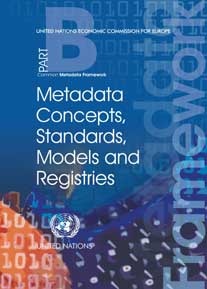|
|
I. Introduction
II. Resource Descriptions
1. Statistical Concepts
1.1 Statistical Classifications
1.3 Statistical Variables and Characteristics
1.4 Statistical Subject-matter Domains (UNECE / SDMX)
1.5 SDMX - Metadata Common Vocabulary
1.6 SDMX - Cross-domain Concepts
1.7 SDMX - Cross-domain Code-lists
2. Technical Standards
2.2 Data Documentation Initiative (DDI)
2.3 Metadata Registries (ISO/IEC 11179)
2.4 Statistical Data and Metadata eXchange (SDMX)
2.5 Common Warehouse Metamodel (ISO/IEC 19504)
2.6 eXtensible Business Reporting Language (XBRL)
3. Models and Statistical Practices
3.1 Neuchâtel Model (Classifications, Variables)
3.3 Generic Statistical Business Process Model (GSBPM)
3.4 Corporate Metadata Repository (CMR)
3.5 Data Quality Assurance Framework (DQAF)/ Special Data Dissemination Standards (SDDS)
3.6 ESS Standard for Quality Reports
3.7 Nordic Metamodel for PC-Axis
4. Methodological Guidelines and Recommendations
4.1 UNECE Guidelines for the Modeling Statistical Data and Metadata
4.2 UNECE Guidelines for Statistical Metadata on the Internet
4.3 Recommendations on Formats Relevant to the Downloading of Data from the Internet
4.4 Best Practices in Designing Websites for Dissemination of Statistics
4.5 Data and Metadata Reporting and Presentation Handbook
III. Relationships between Resources
This section shows the relationships between the different resources described in Section II.
...
